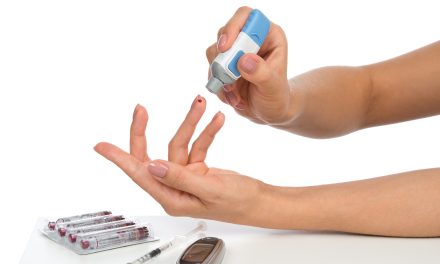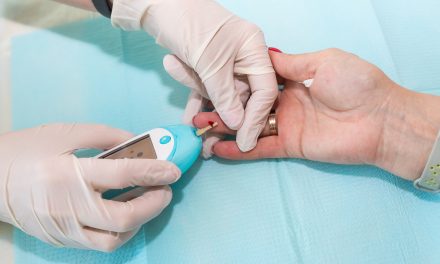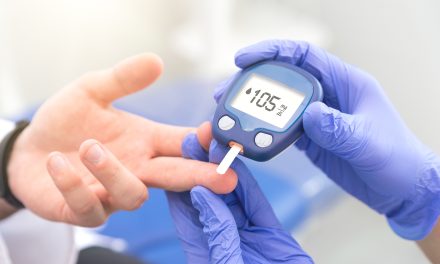Living with Type 2 diabetes brings many daily challenges, and feeling tired is a common experience for many people with this condition. Research shows that fatigue affects up to 61% of people with Type 2 diabetes, making it one of the most frequent symptoms they face.

High and low blood sugar levels can drain energy levels throughout the day. When blood sugar is not well controlled, cells may not get the fuel they need to function properly. This creates a cycle where the body works harder to maintain normal functions, leading to increased tiredness.
Sleep problems and other health issues often occur alongside diabetes, which can make fatigue worse. Managing blood sugar levels, staying active, and working with healthcare providers can help improve energy levels.
Key Takeaways
- Type 2 diabetes directly affects energy levels through blood sugar fluctuations
- Regular monitoring and proper medication help reduce diabetes-related fatigue
- Exercise and good sleep habits can boost energy levels despite diabetes
What Is Type 2 Diabetes?
Type 2 diabetes is a chronic health condition that affects how the body processes blood sugar, also called glucose. It happens when cells become resistant to insulin or when the pancreas doesn’t make enough insulin.
Insulin is a hormone that helps move glucose from food into cells for energy. When insulin doesn’t work properly, too much sugar stays in the blood instead of moving into cells.
Type 2 diabetes develops gradually over time. Most people who get it are over 45 years old, but younger people can develop it too.
Key risk factors include:
- Being overweight or obese
- Not getting enough exercise
- Having a family history of diabetes
- Being age 45 or older
The pancreas tries to make extra insulin to overcome the resistance. Over time, it may not be able to keep up, leading to high blood sugar levels.
High blood sugar levels can cause tiredness and other symptoms. Many people don’t know they have type 2 diabetes until they get tested because early symptoms can be mild.
Type 2 diabetes is different from type 1 diabetes. In type 1, the immune system attacks and destroys insulin-producing cells. Type 2 is more common and often linked to lifestyle factors.
The Link Between Type 2 Diabetes and Fatigue
Type 2 diabetes often causes fatigue and tiredness in many people who live with the condition. This feeling of being worn out can affect daily activities and quality of life.
High or low blood sugar levels can drain energy levels quickly. When blood sugar is not well controlled, cells may not get the fuel they need to function properly.
Sleep problems are common in diabetes and can make fatigue worse. Many people with type 2 diabetes experience poor sleep quality or sleep disorders that leave them feeling tired during the day.
Physical symptoms of diabetes can create a cycle of fatigue:
- Frequent urination disrupting sleep
- Dehydration from high blood sugar
- Inflammation in the body
- Side effects from medications
Long work days and managing diabetes care can be physically and mentally draining. The constant attention needed for blood sugar monitoring, medication timing, and meal planning takes extra energy.
Treatment options can help reduce diabetes-related fatigue:
- Regular exercise
- Balanced diet
- Good sleep habits
- Blood sugar control
- Stress management
Biological Reasons for Increased Fatigue in Type 2 Diabetes
Type 2 diabetes affects energy levels through several key biological processes in the body. The complex interactions between blood sugar, inflammation, and cellular energy production can lead to persistent fatigue symptoms.
Insulin Resistance and Energy Production
Insulin resistance prevents cells from efficiently taking in glucose from the bloodstream. This creates an energy deficit, as cells struggle to produce the ATP needed for basic functions.
The body’s muscles and organs must work harder to try to compensate for reduced glucose uptake. This extra effort depletes energy reserves more quickly than in people without diabetes.
Biological mechanisms affecting energy production include impaired mitochondrial function in cells. The mitochondria cannot effectively convert glucose into usable energy when insulin resistance is present.
The Role of Inflammation
Type 2 diabetes triggers chronic low-grade inflammation throughout the body. This ongoing inflammatory response requires significant energy resources.
Inflammation affects both fatigue levels and sleep quality, creating a cycle that can worsen tiredness. The immune system’s constant activation depletes energy stores.
Pro-inflammatory proteins called cytokines directly impact the brain’s energy regulation centers. This disrupts normal energy balance and increases feelings of fatigue.
Hypoglycemia and Hyperglycemia Effects
Blood sugar fluctuations force the body to constantly adjust, using up valuable energy reserves. Low blood sugar (hypoglycemia) can cause immediate tiredness, weakness, and mental fog.
High blood sugar (hyperglycemia) makes blood thicker and reduces oxygen delivery to cells. This impairs cellular energy production and increases fatigue.
The body expends extra energy trying to remove excess glucose from the blood. This ongoing effort contributes to persistent tiredness throughout the day.
Lifestyle Factors Contributing to Tiredness

Daily habits and routines have a direct impact on energy levels for people with type 2 diabetes. Making strategic lifestyle changes can help reduce fatigue and boost vitality.
Diet and Nutritional Influences
Blood sugar swings can drain energy levels throughout the day. Eating regular, balanced meals helps maintain steady glucose levels.
Key nutrients that fight fatigue:
- Iron-rich foods like lean meats and leafy greens
- B-complex vitamins from whole grains
- Magnesium from nuts and seeds
- Protein from fish, eggs, and legumes
Avoiding sugary foods and processed carbohydrates prevents energy crashes. Small, frequent meals work better than large ones.
Exercise and Physical Activity Levels
Regular physical activity reduces diabetes fatigue by improving insulin sensitivity and blood circulation. Start with 10-15 minutes of daily movement.
Recommended activities:
- Walking after meals
- Light strength training
- Swimming or water aerobics
- Gentle yoga or stretching
Building activity gradually prevents exhaustion. Exercise is most effective when done consistently rather than in intense bursts.
Sleep Patterns and Sleep Disorders
People with type 2 diabetes often experience sleep problems and daytime sleepiness. Poor sleep makes blood sugar harder to control.
Tips for better sleep:
- Keep consistent bedtime schedules
- Create a dark, quiet sleeping environment
- Avoid screens before bed
- Check for sleep apnea
Getting 7-9 hours of quality sleep each night helps restore energy. Medical treatment may be needed if sleep disorders are present.
Emotional and Psychological Impacts

Living with type 2 diabetes affects both mental and physical energy levels. The emotional strain can lead to tiredness while also making blood sugar management more challenging.
Stress and Its Effects on Energy Levels
Emotional stress affects sleep quality and can create a cycle of fatigue in people with diabetes. When stress levels rise, blood sugar often becomes harder to control.
The daily tasks of diabetes management can feel overwhelming. Blood sugar monitoring, medication timing, and dietary restrictions create a mental strain that drains energy.
Many people report feeling mentally exhausted from constant diabetes care. This mental fatigue often leads to physical tiredness.
Diabetes-Related Depression
Depression occurs frequently in diabetes patients and brings symptoms like disrupted sleep and low energy. These symptoms make diabetes harder to manage.
Common signs of diabetes-related depression:
- Constant tiredness
- Changes in sleep patterns
- Loss of interest in activities
- Difficulty concentrating
- Feeling overwhelmed by diabetes care
Women with type 2 diabetes often report feeling more emotional strain than those without the condition. This emotional burden adds to physical fatigue.
Depression can make it harder to maintain healthy habits, which affects blood sugar control and energy levels.
Assessing and Addressing Fatigue

People with type 2 diabetes experience fatigue that can significantly impact their daily lives. Getting a proper medical evaluation and making targeted lifestyle changes can help manage tiredness.
Medical Assessment for Chronic Fatigue
Schedule an appointment with your doctor for a thorough fatigue evaluation. Medical professionals will assess various factors including blood sugar control, sleep patterns, and other health conditions.
Common medical tests include:
- HbA1c levels
- Thyroid function
- Vitamin D levels
- Sleep study screening
- Depression screening
The doctor may also review current medications that could contribute to fatigue. Record energy levels and sleep patterns for 2 weeks before the appointment to help identify patterns.
Lifestyle Modifications and Treatments
Making strategic changes to daily routines can boost energy levels naturally.
Key lifestyle adjustments:
- Maintain consistent sleep and wake times
- Exercise for 30 minutes, 5 days per week
- Eat balanced meals at regular intervals
- Stay hydrated with water throughout the day
- Take scheduled rest breaks during activities
Sleep hygiene tips:
- Keep the bedroom cool and dark
- Avoid screens 1 hour before bed
- Limit caffeine after 2 PM
- Use relaxation techniques before bedtime
Track changes in fatigue levels after implementing new habits to identify what works best.
When to Seek Medical Advice
Contact a doctor right away if extreme tiredness comes with severe blood sugar changes. This includes readings that stay very high or drop too low.
Get medical help if fatigue interferes with daily activities or lasts more than 2 weeks. Persistent exhaustion in diabetes patients needs proper evaluation.
Watch for these warning signs that require immediate medical attention:
- Extreme thirst or frequent urination
- Unexplained weight loss
- Blurred vision
- Slow-healing wounds
- Frequent infections
Pay attention if tiredness occurs with new medications. Some diabetes drugs and other medications like statins can increase fatigue as a side effect.
Seek emergency care if fatigue comes with:
- Chest pain
- Shortness of breath
- Severe headache
- Mental confusion
- Loss of consciousness
Regular check-ups help doctors spot early signs of diabetes-related sleep disorders or other medical issues that may cause tiredness. They can adjust treatment plans as needed.
Managing Type 2 Diabetes to Improve Energy Levels
Taking specific steps to control blood sugar levels through medication, lifestyle changes, and regular monitoring can help reduce fatigue and boost energy in people with type 2 diabetes.
Medication Management
Type 2 diabetes medications must be taken exactly as prescribed to maintain steady energy levels throughout the day. Missing doses or taking them at incorrect times can lead to blood sugar fluctuations and tiredness.
Working with a doctor to find the right medication combination is essential. Some diabetes medications can cause drowsiness as a side effect.
Keep medications organized using:
- Pill organizers labeled by day and time
- Phone reminders for dosing schedules
- A written log of medication times
Diet and Exercise Programs
Eating regular, balanced meals helps prevent blood sugar spikes and crashes that drain energy. Plan 3 main meals and 2-3 small snacks spaced evenly throughout the day.
Key dietary factors:
- Choose high-fiber foods that digest slowly
- Include lean protein with each meal
- Limit refined carbohydrates and sugary foods
- Stay hydrated with water
Exercise naturally increases energy levels while improving insulin sensitivity. Start with 10-15 minutes of daily activity like walking and gradually increase duration.
Monitoring and Controlling Blood Glucose
Regular blood sugar testing helps identify patterns that affect energy. Check levels at different times:
- First thing in the morning
- Before meals
- 2 hours after meals
- Before bed
Record readings along with food, activity, and energy levels to spot connections. Target blood sugar ranges should stay between 80-130 mg/dL before meals and below 180 mg/dL after meals.
Quick adjustments like having a small snack or taking a short walk can help correct levels when needed.
Support and Resources for Individuals with Type 2 Diabetes
People with Type 2 diabetes need strong support systems to manage their condition effectively. Medical professionals, family members, and support groups form vital parts of this network.
Online diabetes self-management resources provide valuable tools and information. These include blood sugar tracking apps, meal planning guides, and educational materials.
Local diabetes education centers offer in-person classes and workshops. These programs teach essential skills like blood sugar monitoring, healthy meal preparation, and exercise planning.
Key Support Resources:
- Primary care physicians
- Diabetes educators
- Nutritionists
- Mental health professionals
- Support groups
- Online communities
Many people experience diabetes-related fatigue and emotional challenges. Professional counseling and peer support groups can help manage these difficulties.
Health insurance providers often cover diabetes education programs and medical supplies. Medicare, Medicaid, and private insurers typically include diabetes care benefits in their plans.
Professional diabetes organizations provide additional resources:
- American Diabetes Association
- National Institute of Diabetes
- Diabetes Research Institute
- Local diabetes support organizations
Access to diabetes care resources varies by location. Community health centers and telehealth services help bridge gaps in care availability.
Frequently Asked Questions
Many people with type 2 diabetes experience fatigue that affects their daily activities and quality of life. Managing this fatigue requires understanding its various causes and implementing effective strategies.
How does fatigue manifest for those with type 2 diabetes?
Type 2 diabetes-related fatigue can present as excessive sleepiness or physical exhaustion. This tiredness often feels different from normal exhaustion.
People may feel drained even after getting adequate sleep. Some experience muscle weakness or difficulty concentrating.
What can be done to manage fatigue associated with type 2 diabetes?
Regular blood sugar monitoring helps prevent extreme fluctuations that lead to tiredness. Exercise, while initially challenging, builds energy levels over time.
A consistent sleep schedule and proper meal timing play key roles in energy management.
Is there a connection between fatigue and depression in diabetic patients?
Research shows that fatigue and depression frequently occur together in diabetes patients. Each condition can make the other worse.
Mental health support often helps improve both mood and energy levels.
Why might individuals with type 2 diabetes experience tiredness after meals?
Post-meal fatigue often occurs when blood sugar rises too high or drops too low after eating. Large meals require more energy for digestion.
Eating smaller, balanced meals can reduce post-meal tiredness.
What strategies can help alleviate morning fatigue for those with diabetes?
Checking blood sugar levels first thing in the morning helps identify patterns. Eating a protein-rich breakfast stabilizes blood sugar.
Getting proper sleep and treating sleep disorders like sleep apnea reduces morning exhaustion.
Which symptoms of type 2 diabetes are considered the most severe or disruptive?
Extreme thirst and frequent urination disrupt daily activities and sleep patterns. Unexplained weight changes signal poor blood sugar control.
Vision changes and slow-healing wounds need immediate medical attention.
Conclusion
Type 2 diabetes can lead to significant fatigue that affects daily life. Severe tiredness impacts both work and personal activities for many people with diabetes.
Managing blood sugar levels through medication, diet, and exercise helps reduce fatigue symptoms. Getting enough sleep and staying physically active are essential steps.
Working closely with healthcare providers helps identify the specific causes of diabetes-related fatigue. They can recommend personalized treatment plans and lifestyle changes.
Support from family and friends makes a big difference. Many people find that having others who understand their fatigue challenges helps them cope better.
Tracking energy levels and symptoms in a daily log allows patients to spot patterns. This information helps doctors provide more targeted treatment options.
With proper medical care and lifestyle management, most people with Type 2 diabetes can reduce their fatigue. Small changes in daily habits often lead to noticeable improvements in energy levels.















